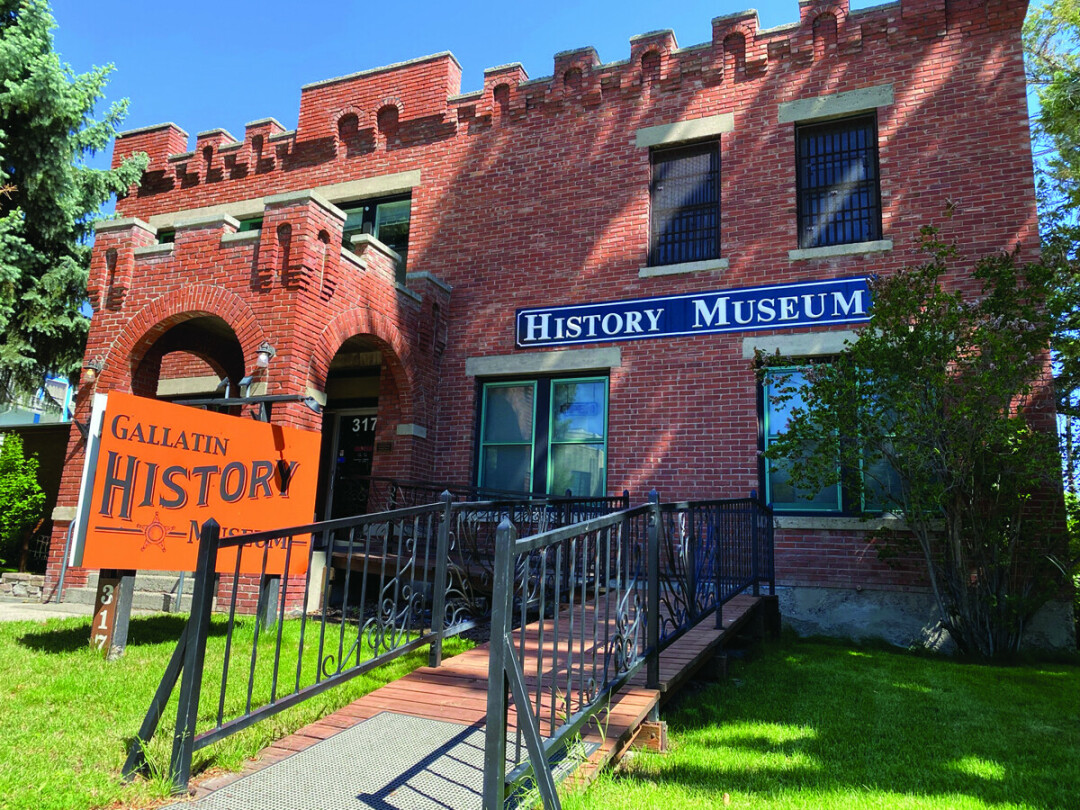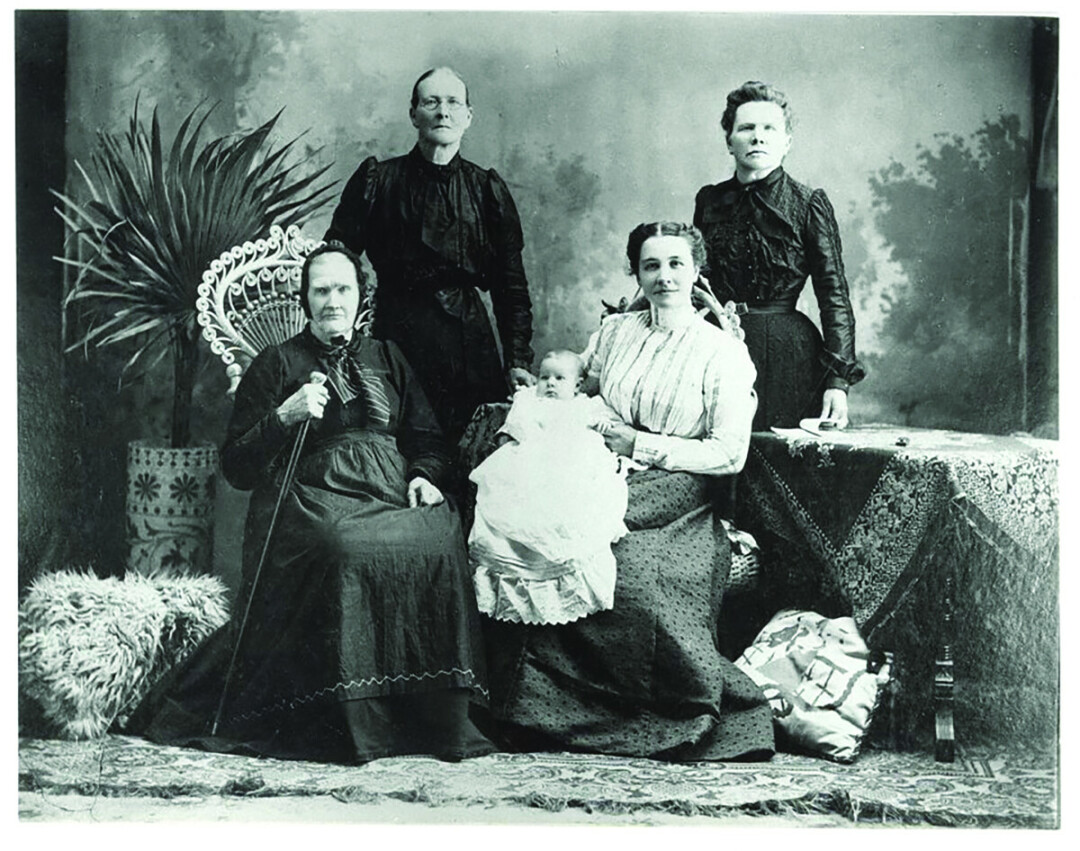Gallatin History Museum: An Amazing Place To Do Research
Friday Apr. 1st, 2022

Many people do not realize that Gallatin County has an amazing history museum in the old Gallatin County Jail, next door to the Courthouse on Main Street. Some wonderful pieces of history have been donated to the Museum by people whose families have lived in the Gallatin Valley for generations. We have family histories, and photos of people, buildings, places, events, and more. We have books that can be used for research, and old ledgers and newspapers, as well as a wonderful bookstore filled with books written by local authors about people and events in the Gallatin Valley and Montana. After retiring in December of 2018, I came to work part-time at the Museum. And every day I work here, I learn something new.
My own family has been in the Gallatin Valley since 1865. Being the youngest sibling in our large family, I thought I knew many of the details of our family history. However, I am learning many things about my family just from working in the Museum. I once heard Martha Drysdale give a presentation about her family at a Sons & Daughters of the Pioneers banquet. One of her comments rang true for me when she said; “every family has skeletons in their closet.” And I am finding that it is pretty interesting finding some of those skeletons! Five generations of Mary “Granny” Yates’ family. L to r: Granny Yates, Lavina Yates Collins (Granny’s daughter), Carrie Cloniger (baby), Lizzie Cloniger (Mary’s daughter), and Mary Ballard (Lavina’s daughter). Photograph courtesy of the Gallatin History Museum.
Five generations of Mary “Granny” Yates’ family. L to r: Granny Yates, Lavina Yates Collins (Granny’s daughter), Carrie Cloniger (baby), Lizzie Cloniger (Mary’s daughter), and Mary Ballard (Lavina’s daughter). Photograph courtesy of the Gallatin History Museum.
One day at work, I was watching someone bring up one of the jail record books from the basement. I knew that my uncle, my dad’s only brother, had spent time in jail and had actually spent five years in prison in Deer Lodge. I wondered if his name was in any of those jail records. Sure enough—and not just once. Some of the stories we had heard over the years hadn’t actually been the complete story. I found that in 1930 he had spent eight days in jail in early March and was released after someone posted a $200 bond. And in November that year, he spent two more days in jail and was released when someone posted a $750 bond. Both times it was for grand larceny. I had heard he went to Deer Lodge for cattle rustling, but I think that both of these incidents were for the cattle rustling. In 1930, $950 was a lot of money, and who in our family had the money to bail him out? I wasn’t able to determine which member of our family posted bond. I later found out the real reason he went to Deer Lodge, and it wasn’t for cattle rustling.
Another time, I was in the basement looking for an entry in the Probate Records for some research on an interesting character who lived here at the turn of the twentieth century. I picked up a ledger that appeared to have nothing recorded in the book. Nothing except one page that had three names written on it. The middle name on that page was the name of my grandfather’s brother, who had been arrested in 1878. One more skeleton we didn’t know about.
This isn’t a skeleton, but it was a fun discovery. My mom had an aunt who lived out on what is now Gee Norman Road. We called her Aunt Maude. I had always heard that she kept diaries for many years. One day in the Museum, I was going through boxes, organizing some of the research materials. I opened one of the boxes, and to my surprise, here were Aunt Maude’s diaries. What a fun find.
My family moved to our farm northwest of Bozeman in the spring of 1955. I remember one day my mom, dad, my two older sisters and I drove over to her house in the Reese Creek area. We picked up a young bull calf and brought him back to the farm. Mom and Dad were in the front of my dad’s old international pickup, and we three sisters were in the back of the pickup, holding the calf all the way home. (Try that today and see how long it would take the authorities to be knocking on your door.) I actually found entries in her diaries that told me when the calf had been born, and the cow’s name that had given birth. I also found the exact entry that showed we drove over and picked him up on Sunday, June 3, 1956, and that it rained hard later that day after we got the calf home.
As I mentioned, the Museum has a great bookstore. There had been several copies of a book called The 1874 Invasion of Montana: A Prelude to the Custer Disaster, by Don L. Weibert. As I walked by the only remaining copy for sale, something told me I needed to buy this book, which has a very detailed history of the cannon that sat in front of the Gallatin County Courthouse for many years, and is now on display in the main room of the Museum. The story is fascinating. It will be such great fun telling people who come to tour the Museum about this wonderful piece of history.
And, oh yes, there is one more fascinating point of interest in this book. Of the approximately 150 men who went on the Yellowstone Wagon Road and Prospecting Expedition, only one man was killed during an encounter with the Indians. That man was my great-great uncle, who was “Granny” Yates’ son. The book gives great details about the battle where he lost his life and where he was buried.
Come into the Museum to tour the exhibits, to do research, or browse the bookstore. And if you have history items that relate to the Gallatin Valley, consider donating to the Museum when you are ready to part with them, so more people can enjoy them. It is amazing what we can learn by spending some quality time in this wonderful treasure trove of history.
Charlotte Miller Mills retired from her office as Gallatin County’s Clerk and Recorder/Election Administrator in December 2018. She has worked part-time at the Museum since October 2019. Her family has lived in the Gallatin Valley since 1865.
| Tweet |